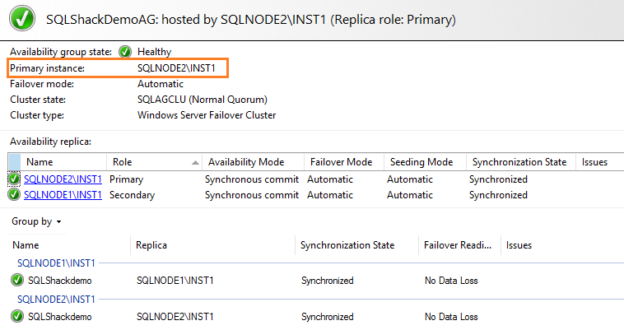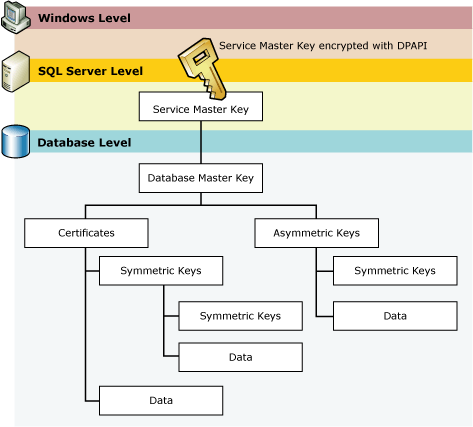In the 20th article of the SQL Server Always On Availability Group series, we will explore the process to refresh an availability group database using SQL scripts. In this article, we will use the DBATools commands for this purpose.
Read more »


In the 20th article of the SQL Server Always On Availability Group series, we will explore the process to refresh an availability group database using SQL scripts. In this article, we will use the DBATools commands for this purpose.
Read more »

This article explores the impact of dropping a login in the active directory if that owns a HADR endpoint and SQL Server Always On Availability Groups. It is the 23rd article in the SQL Server Always On Availability Group.
Read more »

In the previous article, Transparent Data Encryption for SQL Server Always On Availability Groups, we discussed enabling TDE for the existing database in AG. In this article, we will explore options for a compressed backup of a TDE database.
Read more »

In this article, we will be talking about Manticore Search, which is an open-source search engine first released in 2017 as a fork of the Sphinx search engine. We will try to describe this search engine briefly, mention some of its differences from the Sphinx search engine, and we will provide a step-by-step guide on how to build full-text indexes from SQL Server databases. Finally, we will show how to connect to the Manticore engine from the SQL Server management studio using a linked server object. In our previously published articles in this series, we talked briefly about the Sphinx search engine and how to create full-text indexes from SQL Server databases.
Read more »

In this 21st article on SQL Server Always On Availability Group series, we will explore the AG dashboard and its various options for monitoring purposes.
Read more »

In this 20th article for the SQL Server Always On Availability Group series, we will cover the steps to restore an existing availability group database.
Read more »

In this 19th article for SQL Server Always On Availability Groups, we configure MSDTC for distributed transactions in an availability group.
Read more »

In the 18th part of the SQL Server Always On Availability Group series, we will discuss the cross-database MSDTC support in an availability group.
Read more »

In this 17h article of the SQL Server Always On Availability Group series, we are going to explore the SQL Server replication for the distribution database in the availability group.
Read more »

This is the 16th article for SQL Server Always On Availability Groups series and explores SQL replication integration with AGs.
Read more »

In this 15th article of SQL Server Always On Availability Groups series, we will cover Transparent Data Encryption (TDE) for AG databases.
Read more »

In this article, we will learn some basic tips for SQL Server performance tuning. Tuning the SQL Server performance will help to access data faster so the applications data interaction performances will enhance.
Read more »

In this 14th article of SQL Server Always On Availability Group series, we monitor and failover a distributed AG.
Read more »

In the previous article, An overview of distributed SQL Server Always On Availability Groups, we explored the concept of the distributed availability groups in SQL Server Always On Availability Group. It is available from Windows Server 2016 and SQL Server 2017.
Read more »

Performance Monitor is an oldie but goldie tool to analyze performance problems. In this article, we will learn how we can write Perfmon counter data to a SQL database through the ODBC connection.
Read more »

This is the 12th article in the series of SQL Server Always On Availability Groups.
Read more »

In this article, we will discuss how to resolve I/O problems that is a very important point for the SQL Server troubleshooting. The storage subsystem is one of the significant performance factors for the databases. Detecting and identifying I/O problems in SQL Server can be a tough task for the database administrators (DBAs). Generally, the underlying reasons for the I/O problems can be:
Read more »

This article continues from the series on SQL Server Always On Availability Group. This is the 11th article in this series.
Read more »

This is the 10th article in the series for SQL Server Always On Availability Groups.
Read more »

This is the 9th article in the series of SQL Server Always On Availability Groups.
Read more »

In the previously published article, Getting started with Sphinx search engine, we talked about the Sphinx search engine and how to install it on the Windows operating system. In this article, we will talk about building full-text indexes using Sphinx. We will be covering seven topics:
Read more »

This is the 8th article in the series for SQL Server Always On Availability Groups.
Read more »

This is the 7th article in the series of SQL Server Always on Availability Groups.
Read more »

In this article, we will learn how to test our storage subsystems performance using Diskspd. The storage subsystem is one of the key performance factors for SQL Server because SQL Server storage engine stores database objects, tables, and indexes on the physical files. Therefore, the storage engine always interacts with the disk subsystem because of data processing. In this context, when a bottleneck occurs on the storage subsystems, it causes a negative impact on SQL Server performance. It would be the right approach to measure the performance of the disks to be used before the SQL Server installation based on their usage purposes. For example, OLTP databases have to complete delete, insert, and update processes in a short time but OLAP databases handle a huge amount of batch data. In this case, the storage requirement of these two database systems should differ from each other. In short, it is a best practice to test and analyze the performance of the storage subsystems according to their usage purposes so that we can eliminate the I/O problems in advance.
Read more »

This article is a 6th article in the series for SQL Server Always On Availability Groups. It covers the configuration of the group managed service account (gMSA) for SQL Services.
Read more »© Quest Software Inc. ALL RIGHTS RESERVED. | GDPR | Terms of Use | Privacy